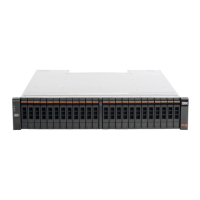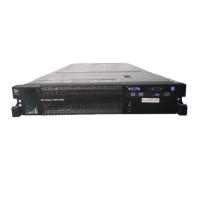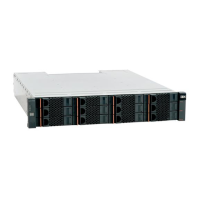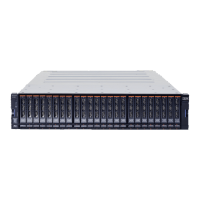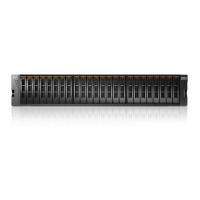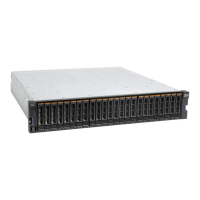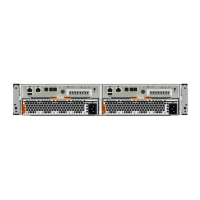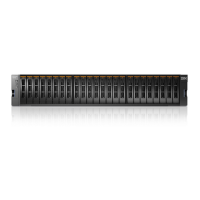want to initiate a failover, refer to “Performing management node role
failover on a “good” system” on page 184.
v If the system responds that the management service is not running, proceed
to the next step.
Note: For a management service that is not running, the system displays
information similar to the following example:
[yourlogon@yourmachine.mgmt002st001 ~]# lsnode
EFSSG0026I Cannot execute commands because Management Service is stopped.
Use startmgtsrv to restart the service.
3. Attempt to stop and restart the management services. Wait for the commands
to complete.
a. Run the CLI command stopmgtsrv.
b. Run the CLI command startmgtsrv. This restarts the management services.
4. Once command execution is complete:
a. Verify that the management service is running by again executing the CLI
command lsnode. If the system responds that the management service is
not running, proceed to step 5.
b. If the lsnode output provides system configuration information, verify that
you can access and log in to the GUI. If you still have trouble with
accessing the GUI, refer to .
c. If the problem appears to be resolved, DO NOT perform steps 5-9. Instead,
using the GUI event log, follow the troubleshooting documentation to
isolate the software or hardware problem that might have caused this issue.
Attention: Perform the following steps only if the active management node is
not responding properly. These steps initiate a startup and failover of the
management services on the file module hosting the passive management node
role.
5. Open an SSH connection to the service IP and port of the file module with the
passive management node role. Refer to “Determining the service IP for the
management node roles” on page 183.
6. Verify the management service status by running the CLI command lsnode. If
the file file module responds that the management service is not running,
proceed to the next step.
7. Run the CLI command startmgtsrv. This starts the management services on
the passive node.
8. Once command execution is complete:
a. Verify that the management service is running by again executing the CLI
command lsnode.
b. If the lsnode output provides system configuration information, verify that
you can access and log in to the GUI. If you still have trouble with
accessing the GUI, refer to .
c. If the lsnode output reports that the management service is still not
running, contact IBM support.
9. Using the GUI event log, follow the troubleshooting documentation against the
file module with the failed management node role to isolate the software or
hardware problem that might have caused this issue.
186 Storwize V7000 Unified: Problem Determination Guide 2073-720
